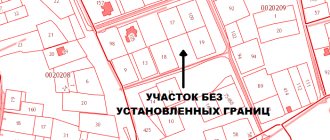Acquisition of rights
When purchasing a plot, a citizen can in addition receive a list of certain opportunities.
Having owned an allotment, a person, in accordance with legislative provisions, has the right:
- use useful resources located on the site at your own discretion. The only caveat is that found minerals cannot be sold for sale without special permission (the nuances of such a procedure are reflected in Article 18 “On Subsoil”). Moreover, their extraction must be carried out without the use of explosive processes;
- build any objects on the acquired land - this also applies to buildings for cultural and domestic purposes;
- carry out irrigation, reclamation and other measures in order to increase the fertility of the cultivated soil. There is a restriction - the owner of the plot cannot carry out operations that will in any way affect neighboring plots;
- establish the legal status of the site, change it as you please. That is, the owner can sell, lease, alienate in favor of a third party. Land pledge is also available. In other words, in one way or another, a citizen has the right to realize almost all forms of land ownership;
- dispose of products obtained in the process of using the land.
The owner of the site is granted quite a lot of rights, but he should also take into account the fixed restrictions and nuances.
Civil Code of the Russian Federation Part 1
| Previous chapter | Content | Next chapter |
| Section II. OWNERSHIP AND OTHER PROPERTY RIGHTS |
Chapter 17. OWNERSHIP AND OTHER PROPER RIGHTS TO LAND
Note: The norms of Chapter 17 regarding transactions with agricultural land plots come into force from the date of entry into force of the Land Code of the Russian Federation and the law on the turnover of agricultural land.
Article 260. General provisions on land ownership
1. Persons who own a plot of land have the right to sell it, donate it, pledge it or lease it and otherwise dispose of it (Article 209) insofar as the relevant lands are not excluded from circulation or limited in circulation on the basis of law.
2. On the basis of the law and in the manner established by it, lands for agricultural and other special purposes are determined, the use of which for other purposes is not allowed or is limited. The use of a land plot classified as such land can be carried out within the limits determined by its intended purpose. (as amended by Federal Law dated June 26, 2007 N 118-FZ)
Article 261. Land plot as an object of ownership rights
1. Lost power. — Federal Law of December 4, 2006 N 201-FZ.
2. Unless otherwise established by law, the right of ownership of a land plot extends to the surface (soil) layer and water bodies located within the boundaries of this plot, and the plants located on it. (as amended by Federal Laws dated 03.06.2006 N 73-FZ, dated 04.12.2006 N 201-FZ)
3. The owner of a land plot has the right to use, at his own discretion, everything that is above and below the surface of this plot, unless otherwise provided by laws on subsoil, on the use of air space, other laws and does not violate the rights of other persons.
Article 262. Land plots for public use. Access to the land plot
1. Citizens have the right to freely, without any permission, be on land plots that are not closed to public access and are in state or municipal ownership, and to use the natural objects available on these plots to the extent permitted by law and other legal acts, as well as by the owner the corresponding land plot.
2. If the land plot is not fenced or its owner has not otherwise clearly indicated that entry to the plot without his permission is not permitted, any person may pass through the plot, provided that this does not cause damage or disturbance to the owner.
Article 263. Development of a land plot
1. The owner of a land plot may erect buildings and structures on it, carry out their reconstruction or demolition, and permit construction on his plot by other persons. These rights are exercised subject to compliance with urban planning and construction norms and rules, as well as requirements regarding the intended purpose of the land plot (clause 2 of Article 260). (as amended by Federal Law No. 118-FZ dated June 26, 2007)
2. Unless otherwise provided by law or agreement, the owner of a land plot acquires the right of ownership to a building, structure and other real estate erected or created by him for himself on the plot belonging to him.
The consequences of unauthorized construction carried out by the owner on a land plot belonging to him are determined by Article 222 of this Code.
Article 264. Rights to land of persons who are not owners of land plots
1. Land plots may be provided by their owners to other persons on the terms and in the manner provided for by civil and land legislation. (Clause 1 as amended by Federal Law dated June 26, 2007 N 118-FZ)
2. A person who is not the owner of a land plot exercises his rights of ownership and use of the plot on the terms and within the limits established by law or an agreement with the owner.
3. The owner of a land plot who is not the owner does not have the right to dispose of this plot, unless otherwise provided by law. (as amended by Federal Law No. 118-FZ dated June 26, 2007)
Article 265. Grounds for acquiring the right of lifelong inheritable ownership of a land plot
The right to lifelong inheritable ownership of a land plot in state or municipal ownership is acquired by citizens on the grounds and in the manner provided for by land legislation.
Article 266. Possession and use of a land plot on the right of lifelong inheritable possession
Disposal of a land plot that is in lifelong inheritable possession is not permitted, except in the case of transfer of the right to a land plot by inheritance.
Article 267. Disposal of a land plot located in lifelong inheritable possession
(as amended by Federal Law No. 118-FZ dated June 26, 2007)
1. The owner of a land plot may transfer it to other persons for rent or free-term use.
2. The sale, pledge of a land plot and the execution by its owner of other transactions that entail or may entail the alienation of the land plot are not allowed.
Article 268. Grounds for acquiring the right to permanent (indefinite) use of a land plot
1. The right to permanent (unlimited) use of a land plot in state or municipal ownership is granted to a state or municipal institution, state-owned enterprise, state authority, local government body on the basis of a decision of the state or municipal body authorized to provide land plots for such use. (as amended by Federal Laws dated December 4, 2006 N 201-FZ, dated June 26, 2007 N 118-FZ)
2. Lost power. — Federal Law of June 26, 2007 N 118-FZ.
3. In the event of reorganization of a legal entity, the right of permanent (indefinite) use of a land plot belonging to it shall be transferred through the procedure of legal succession. (as amended by Federal Law No. 118-FZ dated June 26, 2007)
Article 269. Possession and use of land on the right of permanent (indefinite) use
(as amended by Federal Law No. 118-FZ dated June 26, 2007)
1. A person to whom a land plot is granted for permanent (indefinite) use shall own and use this plot within the limits established by law, other legal acts and the act on granting the plot for use. (as amended by Federal Law No. 118-FZ dated June 26, 2007)
2. A person to whom a land plot is granted for permanent (indefinite) use has the right, unless otherwise provided by law, to independently use the plot for the purposes for which it is provided, including the construction of buildings, structures and other real estate on the plot for these purposes. Buildings, structures, and other real estate created by this person for himself are his property. (as amended by Federal Law No. 118-FZ dated June 26, 2007)
Article 270. Disposal of a land plot in permanent use
Lost power. — Federal Law of December 4, 2006 N 201-FZ.
Article 271. Right to use a land plot by the owner of real estate
1. The owner of a building, structure or other real estate located on a land plot owned by another person has the right to use the land plot provided by such person for this real estate. (as amended by Federal Law No. 118-FZ dated June 26, 2007)
The paragraph is no longer valid. — Federal Law of June 26, 2007 N 118-FZ.
2. When the ownership of real estate located on someone else’s land plot is transferred to another person, he acquires the right to use the corresponding land plot on the same conditions and to the same extent as the previous owner of the property. (as amended by Federal Law No. 118-FZ dated June 26, 2007)
The transfer of ownership of a land plot is not the basis for termination or change of the right to use this plot belonging to the owner of the real estate.
3. The owner of real estate located on someone else’s land plot has the right to own, use and dispose of this real estate at his own discretion, including demolition of the relevant buildings and structures, insofar as this does not contradict the conditions for use of this plot established by law or agreement.
Article 272. Consequences of the loss by the owner of real estate of the right to use the land plot
1. Upon termination of the right to use a land plot granted to the owner of the real estate located on this plot (Article 271), the rights to the real estate left by its owner on the land plot are determined in accordance with an agreement between the owner of the plot and the owner of the corresponding real estate.
2. In the absence or failure to reach an agreement specified in paragraph 1 of this article, the consequences of termination of the right to use the land plot are determined by the court at the request of the owner of the land plot or the owner of the real estate.
The owner of a land plot has the right to demand in court that the owner of the property, after termination of the right to use the plot, release him from the property and restore the plot to its original condition.
In cases where the demolition of a building or structure located on a land plot is prohibited in accordance with the law and other legal acts (residential buildings, historical and cultural monuments, etc.) or cannot be carried out due to the obvious excess cost of the building or structure compared with the value of the land allocated for it, the court, taking into account the grounds for termination of the right to use the land plot and upon presentation of relevant demands by the parties, may:
recognize the right of the owner of real estate to acquire ownership of the land plot on which this real estate is located, or the right of the owner of the land plot to acquire the remaining real estate on it, or
establish the conditions for the use of the land plot by the property owner for a new period.
3. The rules of this article do not apply when a land plot is withdrawn for state or municipal needs (Article 283), as well as when rights to a land plot are terminated due to its improper use (Article 286).
Article 273. Transfer of the right to a land plot upon alienation of buildings or structures located on it
When transferring ownership of a building or structure that belonged to the owner of the land plot on which it is located, the owner of the building or structure passes to the owner of the land plot occupied by the building or structure and necessary for its use, unless otherwise provided by law. (as amended by Federal Law No. 118-FZ dated June 26, 2007)
Part two is no longer valid. — Federal Law of June 26, 2007 N 118-FZ.
Article 274. The right to limited use of someone else’s land plot (easement)
1. The owner of real estate (land plot, other real estate) has the right to demand from the owner of a neighboring land plot, and, if necessary, from the owner of another land plot (adjacent plot), to grant the right to limited use of the neighboring plot (easement).
An easement can be established to ensure passage and passage through a neighboring land plot, the laying and operation of power lines, communications and pipelines, provision of water supply and land reclamation, as well as other needs of the owner of real estate that cannot be provided without the establishment of an easement.
2. Encumbering a land plot with an easement does not deprive the owner of the plot of the rights of ownership, use and disposal of this plot.
3. An easement is established by agreement between the person requiring the establishment of an easement and the owner of the neighboring plot and is subject to registration in the manner established for the registration of rights to real estate. If no agreement is reached on the establishment or conditions of the easement, the dispute is resolved by the court at the request of the person demanding the establishment of the easement.
4. Under the conditions and in the manner provided for in paragraphs 1 and 3 of this article, an easement may also be established in the interests and at the request of the person to whom the plot is allocated on the right of lifelong inheritable possession or the right of permanent (perpetual) use, and other persons in cases provided for by federal laws. (as amended by Federal Laws dated June 26, 2007 N 118-FZ, dated December 30, 2008 N 311-FZ)
5. The owner of a plot of land encumbered by an easement has the right, unless otherwise provided by law, to demand from the persons in whose interests the easement is established a proportionate payment for the use of the plot.
Article 275. Preservation of easement upon transfer of rights to a land plot
1. The easement is preserved in the event of the transfer of rights to the land plot, which is encumbered by this easement, to another person.
2. An easement cannot be an independent subject of purchase, sale, or pledge, and cannot be transferred in any way to persons who are not the owners of the real estate to ensure the use of which the easement was established.
Article 276. Termination of easement
1. At the request of the owner of a land plot encumbered with an easement, the easement may be terminated due to the disappearance of the grounds on which it was established.
4. Under the conditions and in the manner provided for in paragraphs 1 and 3 of this article, an easement may also be established in the interests and at the request of the person to whom the plot is provided with the right of lifelong inheritable possession or the right of permanent (perpetual) use. (as amended by Federal Law No. 118-FZ dated June 26, 2007)
Article 277. Encumbrance of buildings and structures with servitude
In relation to the rules provided for in Articles 274 - 276 of this Code, an easement may be encumbered by buildings, structures and other real estate, the limited use of which is necessary regardless of the use of the land plot.
Article 278. Levy of execution on a land plot
Foreclosure of a land plot for the obligations of its owner is permitted only on the basis of a court decision.
Article 279. Purchase of land for state and municipal needs
1. A land plot may be seized from the owner for state or municipal needs through redemption.
Depending on whose needs the land is being seized, the purchase is carried out by the Russian Federation, the corresponding subject of the Russian Federation or a municipal entity.
2. The decision to withdraw a land plot for state or municipal needs is made by federal executive authorities, executive authorities of a constituent entity of the Russian Federation or local government bodies. (as amended by Federal Law dated December 18, 2006 N 232-FZ)
Federal executive authorities, executive authorities of constituent entities of the Russian Federation, local self-government bodies authorized to make decisions on the seizure of land plots for state or municipal needs, the procedure for preparing and adopting these decisions are determined by federal land legislation. (as amended by Federal Law dated December 18, 2006 N 232-FZ)
3. The owner of a land plot must be notified in writing by the body that made the decision on the seizure no later than a year before the upcoming seizure of the land plot. The purchase of a land plot before the expiration of a year from the date the owner receives such notice is permitted only with the consent of the owner.
4. The decision of a federal executive body, an executive body of a constituent entity of the Russian Federation or a local government body to seize a land plot for state or municipal needs is subject to state registration with the body that registers rights to the land plot. The owner of the land plot must be notified of the registration, indicating its date. (as amended by Federal Law dated December 18, 2006 N 232-FZ)
5. Lost power. — Federal Law of June 26, 2007 N 118-FZ.
Article 280. Rights of the owner of a land plot subject to seizure for state or municipal needs
The owner of a land plot subject to seizure for state or municipal needs, from the moment of state registration of the decision to seize the site until an agreement is reached or a court decision is made to purchase the site, may own, use and dispose of it at his own discretion and make the necessary expenses to ensure the use of the site in accordance with with its intended purpose. However, the owner bears the risk of attributing to him, when determining the redemption price of the land plot (Article 281), costs and losses associated with new construction, expansion and reconstruction of buildings and structures on the land plot during the specified period. (as amended by Federal Law No. 118-FZ dated June 26, 2007)
Article 281. Redemption price of a land plot withdrawn for state or municipal needs
1. Payment for a land plot withdrawn for state or municipal needs (redemption price), terms and other conditions of redemption are determined by agreement with the owner of the plot. The agreement includes the obligation of the Russian Federation, a constituent entity of the Russian Federation or a municipal entity to pay the redemption price for the seized plot.
2. When determining the redemption price, it includes the market value of the land plot and the real estate located on it, as well as all losses caused to the owner by the seizure of the land plot, including losses that he incurs in connection with the early termination of his obligations to third parties, including including lost profits.
3. By agreement with the owner, he may be provided with another plot of land in exchange for the plot seized for state or municipal needs, with its value included in the redemption price.
Article 282. Redemption of a land plot for state or municipal needs by court decision
If the owner does not agree with the decision to confiscate a land plot from him for state or municipal needs or an agreement has not been reached with him on the redemption price or other terms of redemption, the federal executive body, the executive body of the constituent entity of the Russian Federation or the local government body that made such a decision , may file a claim for the redemption of the land plot in court. A claim for the purchase of a land plot for state or municipal needs may be brought within three years from the date of sending the notice specified in paragraph 3 of Article 279 of this Code to the owner of the plot. (as amended by Federal Laws dated December 18, 2006 N 232-FZ, dated June 26, 2007 N 118-FZ)
Article 283. Termination of rights to own and use a land plot when it is withdrawn for state or municipal needs
In cases where a land plot withdrawn for state or municipal needs is owned and used on the basis of the right of lifelong inheritable possession or permanent (perpetual) use, the termination of these rights is carried out in relation to the rules provided for in Articles 279 - 282 of this Code. (as amended by Federal Law No. 118-FZ dated June 26, 2007)
Article 284. Confiscation of a land plot that is not used in accordance with its intended purpose
(as amended by Federal Law No. 118-FZ dated June 26, 2007)
A land plot may be seized from the owner in cases where the plot is intended for agricultural production or housing or other construction and is not used for the corresponding purpose for three years, unless a longer period is established by law. This period does not include the time required to develop the site, as well as the time during which the site could not be used for its intended purpose due to natural disasters or other circumstances precluding such use. (as amended by Federal Law No. 118-FZ dated June 26, 2007)
Article 285. Confiscation of a land plot used in violation of the law
A land plot may be seized from the owner if the use of the plot is carried out in gross violation of the rules for the rational use of land established by land legislation, in particular if the plot is not used in accordance with its intended purpose or its use leads to a significant decrease in the fertility of agricultural land or a significant deterioration of the environmental situation.
Article 286. Procedure for seizure of a land plot due to its improper use
1. The body of state power or local self-government authorized to make decisions on the seizure of land plots on the grounds provided for in Articles 284 and 285 of this Code, as well as the procedure for mandatory advance warning of plot owners about violations, are determined by land legislation.
2. If the owner of a land plot notifies in writing the body that made the decision to seize the land plot of his consent to comply with this decision, the plot is subject to sale at public auction.
3. If the owner of a land plot does not agree with the decision to confiscate the plot from him, the body that made the decision to confiscate the plot may submit a demand for the sale of the plot to the court.
Article 287. Termination of rights to a land plot belonging to persons who are not its owners
Termination of rights to a land plot belonging to tenants and other persons who are not its owners due to improper use of the plot by these persons is carried out on the grounds and in the manner established by land legislation.
| Previous chapter | Content | Next chapter |
Owner's responsibilities
The acquisition of land for permanent ownership involves obtaining not only rights, but also specific obligations of a citizen:
- the use of the site must be sufficiently efficient, in accordance with the purposes prescribed by the contract;
- timely pay state fees for the sale of real estate resources, be it land tax or rent;
Responsibilities of landowners - not to infringe on the interests of other owners and tenants of the land plot. Otherwise, the victim has the right to file a claim in civil court;
- in due time, submit information to the relevant departments, by which one can judge the current legal and physical condition of the site - this information is the components for filling out cadastral registration documents;
- ensure the safety of signs installed on the ground by government agencies. In particular, this applies to geodetic and boundary markings. It is important to understand that ignoring this need is considered a serious act, entailing a number of legal consequences.
Responsibilities of land owners to protect land
Every responsible citizen must adequately understand that obtaining their own land carries with it a certain responsibility. After all, according to regulatory legal acts, he is assigned responsibilities, and if they are not observed, then significant problems can arise with government departments.
What rights and responsibilities does a person in possession have?
Owner-owner
The owner has the most complete property rights. The content of this right is regulated by the norms of the Land Code, Article 15, as well as the Civil Code, Article 209.
The right of ownership to own a land plot presupposes that the owner has the opportunity to own, use and dispose of his land plot (commentary to Article 209 of the Civil Code).
These powers are vested in each participant, which is confirmed by a corresponding document called a certificate of ownership.
Responsibilities of the owner-owner:
- use of land for its intended purpose.
- Be guided by environmental, sanitary and hygienic, construction and other standards.
- Follow fire safety rules.
- Keep the area clean and avoid negative impacts.
- Maintain special signs that are installed on the sites (for example, geodetic signs).
What are the responsibilities of the owner of a land plot from the video:
Tenant-owner
The rights of a land tenant are regulated by the rules of the Land Code, Art. 41:
- the opportunity to use the natural resources of the site (fossils, water bodies).
- Getting something from rented land (growing grain crops, vegetables and fruits).
- Construction of buildings, reservoirs.
- Carrying out various types of work (irrigation, drainage, etc.).
The responsibilities of the tenant-owner are almost the same as those of the owner, only a few additional points are added to them:
- use of land for its intended purpose.
- Be guided by environmental, sanitary and hygienic, construction and other standards.
- Follow fire safety rules.
- Keep the area clean and avoid negative impacts.
- Maintain special signs that are installed on the sites (for example, geodetic signs).
- Make payments for land on time.
- Use sites in a timely manner if development deadlines are provided.
Legislative acts
Accurately understanding the nuances of your rights and obligations that arise when purchasing a land plot is quite problematic due to their multidirectionality and the large number of legal acts that regulate these positions.
Therefore, it is so important to highlight the basic laws, in accordance with which the general rights and obligations of a citizen are clarified - there you can also find information regarding the powers of the land owner:
- First of all, it is worth highlighting the Constitution of the Russian Federation as a regulatory document;
Powers of the land owner - It should also be noted that Federal Law No. 218 stipulates the provisions on the registration of rights to real estate;
- The Civil Code of the Russian Federation also has its own characteristics. In particular, it is worth paying attention to section 2 “Ownership rights and other real rights”, which discusses provisions of interest to the owner of real estate.
- individual regulatory decrees of the President of the Russian Federation;
- some decrees and orders of the Government of the country;
- many other regulatory legal acts that contain information on the rights and obligations of the acquirer of a land plot.
You need to understand that all these established provisions must be strictly observed - if they are ignored, the violator will be held accountable, which entails clearly negative consequences.
What is it: general concept
Possession is the real possession of a land plot, carried out through its surveying and fencing, as well as accounting in the household, and confirmed by registration of ownership.
However, in some cases, it is not the owner who actually owns the land: when the land is mortgaged, leased or in trust.
In most cases, ownership implies use, but does not give the right to dispose.
Use is the extraction of useful properties or income from the land through free farming, harvesting, mining, etc., as well as caring for the site and protecting it from destruction, pollution and pest infestation, which is the responsibility of both owners and non-owners. land owners (Article 42 of the Land Code of the Russian Federation). More information about what the use of a land plot is, the essence, receipt and implementation of this right is described here.
The right of disposal is the legitimate authority to determine the legal fate of a site : to change its categorical affiliation, the composition of owners, possessors and users, as well as the very procedure for using the site; donation of land, leasing or selling it, etc.
Responsibility
When owning any real estate, a citizen must ensure compliance with certain measures to maintain the site in accordance with the law.
For example, the provisions of the Civil Code of the Russian Federation provide for the obligation of the owner, according to which he is obliged to preserve the environment and not deteriorate the quality of soil, be it the use of chemically hazardous fertilizers, which cause contamination of the area, or carrying out intensive irrigation procedures, after which the soil may change significantly. geodetic position of the soil.
It is worth recalling that a citizen is responsible not only for maintaining the optimal condition of the land allotment, but also for possible violations regarding buildings on the assigned territory.
So, when receiving a plot of land for use, a citizen must be guided by the provisions of the Civil Code of the Russian Federation and the Constitution of the Russian Federation - this is only the first step. To eliminate cases of problems arising with government departments, it is necessary to familiarize yourself with other legislative acts - to study the pitfalls, nuances and features.
At the same time, a thorough study of these positions has a higher priority, since a land plot is a fairly attractive acquisition for numerous scammers who can cause a lot of problems in a completely legal way if a citizen does not know his rights and responsibilities.
Types of land use rights
The law regulates the following types:
- Permanent (indefinite) use - now this right no longer arises, but continues to be valid for those who acquired it before the adoption of the Land Code of the Russian Federation.
- An easement is a limited use of someone else's land, arising from a contract or law under the presence of special conditions for this.
- Lifetime inheritable ownership is a right, like permanent (perpetual) use, which is no longer granted, but is available to those who acquired it earlier.
- Lease or sublease - implies the right to use a plot of land for a certain time and on a reimbursable basis.
- Urgent free use means that citizens or a legal entity can transfer their land for use for a certain time and not require payment for it. The parties enter into a corresponding agreement regarding this.
Legal regulation
In case of non-compliance with the rights of the owner of the land plot, he can file a claim with the Civil Court of the Russian Federation with a demand to restore the violated privileges and receive compensation in situations involving such a moment.
In actual case practice, most of the proceedings are distributed as follows:
- violation of the rights of the owner of real estate due to the actions of third parties. In this case, the plaintiff can base his claims on Art. 12 of the Civil Code of the Russian Federation, which precisely defines possible options for ensuring the safety of one’s rights in connection with their non-compliance or the prerequisites for this. The same act provides for methods of compensation for damage - both material and moral;
- challenging the degree of ownership of real estate. The review procedure will be regulated by Art. 59 of the Land Code of the Russian Federation.
Important: to ensure compliance with legal norms, it will be enough to provide judicial officers with documents confirming the right to dispose of the site.
- in case of unauthorized use of the area by third parties without concluding an agreement with the owner of the territory, the latter may file a claim on the basis of Art. 60 Land Code of the Russian Federation.
The provisions of this article provide for a similar development in the actions of citizens, therefore, in the presence of establishing documents, the victim will restore his rights in full. In this case, all buildings erected by the violator on the territory of the legal owner will be obligatory removed in the future;
- in Art. 61 of the Land Code of the Russian Federation strictly defines that if a normative act is incorrectly drawn up by executive departments that violates the rights of the owner, the court may, by its decision, annul the validity of the document.
Legal ownership of the area is quite subtly regulated by numerous articles of the country's codes, providing significant protection for the interests of the citizen. It is important to understand that in order to avoid problems with the court making the right decision, the owner must have all the title documents in hand.
How to establish the fact of ownership of land plots, other natural resources and water subsoil?
If the owner has lost documents confirming his property rights, as well as in cases where these documents have been damaged, the landowner and land user can go to court to establish the fact of ownership and use of land in a special proceeding (Clause 6, Part 2, Article 264 of the Civil Procedure Code RF).
You can read about the loss of rights to use land here, and learn more about how to properly file a claim to remove obstacles to the use of land here. The procedure is also necessary in the case of acquisition of property by non-owners by acquisitive prescription (Article 234 of the Civil Code of the Russian Federation).
Real estate, including land, is subject to the condition of bona fide, open and continuous ownership of the site for 15 years.
Additional conditions for the applicant may include confirmation of the refusal to issue a document on ownership or the impossibility of restoring it, as well as the absence of a dispute regarding the ownership of the land.
If the plot was previously registered in the name of another person, unauthorized construction was carried out on its territory, or the land acquisition transaction was not formalized properly, it will be impossible to establish this fact.
Redistribution of plots
The legislation provides for the possibility of redistributing plots - this option is relevant for owners of several territories. During the implementation process, adjacent plots appear, while the existence of old ones ceases in accordance with the reissued documents.
Redistribution can be carried out when certain cadastral works have been carried out. Territories subject to the process must meet certain criteria:
- they are adjacent;
- when forming new boundaries, the rules of land surveying must be observed;
- each plot is located in the same municipality and has an identical land category.
Redistribution of plots
To activate the process, it is necessary to provide an application that reflects the consent of all plot owners to carry out the redistribution. If the procedure is implemented by decision of the judicial authorities, a written request from the owners is not required.
In most situations, the procedure is relevant due to the need to sell a share of land. For example, the owner of the territory wanted to transfer to his neighbor for a monetary reward only part of his plot, but not the whole. In this consideration, alienation is impossible without redistribution - a separate piece of land is not assigned a cadastral number.
Sample application for redistribution of plots
In the process of implementing the decision of the district administration, geodetic measurements and cadastral work are carried out. After their completion and regulatory registration, the owners acquire passports and other title documents for the site with new boundaries.









